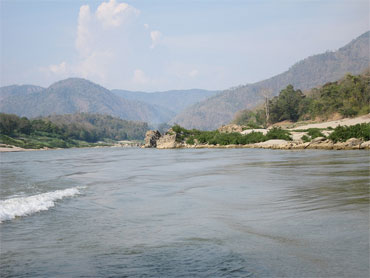The Shan Sapawa Environmental Organization has accused Myanmar military forces of “stoking war” in Shan State by giving an ultimatum to the Shan State Army-North (SSA-N) to clear troops from the banks of the Salween River to make way for a Chinese-backed mega dam.
 In a report released on April 1, the environmental NGO said that since February thousands of Myanmar troops have been brought to the area.
In a report released on April 1, the environmental NGO said that since February thousands of Myanmar troops have been brought to the area.
“On March 26, the Burmese Northeast Regional Commander ordered SSA-N troops to move out immediately from east of the Tangyan-Mong Kao road or face attack,” says the report.
The river is one of the world's last free-running rivers and runs from the Tibetan Himalayas through Myanmar and Thailand to the Andaman Sea. Numerous companies have expressed interest in harnessing the river's power; however, many of the 13 proposed dam projects have come under criticism as severe human rights abuses have been reported in the militarized dam sites, including land grabs, forced labor and rape.
Last month 2,000 internally displaced people and villagers from the Wei Gyi area gathered by the Salween riverbank to protest continued plans to construct six hydroelectric dams on the river.
Another environmental NGO, Salween River Watch, released a report in March outlining the current status of the Salween River in response to an announcement made by Myanmar's deputy minister for electric power in late February that six controversial dam projects on the river had been granted approval.
“With a combined installed capacity of 15,000 MW, the projects will include the Upper Salween or Kunlong Dam, the Mai Tong or Tasang Dam, Nong Pha Dam, Mantawng Dam (on a tributary), Ywathit Dam, and Hatgyi Dam. The investment will come from five Chinese corporations, Thailand’s Electricity Generation Authority of Thailand (EGAT) International Co Ltd and three Burmese corporations,” said the Salween Watch report.
Shan Sapawa has urged for all dam projects on the Salween River to be halted while peace negotiations are underway with the various ethnic armed resistance groups.


